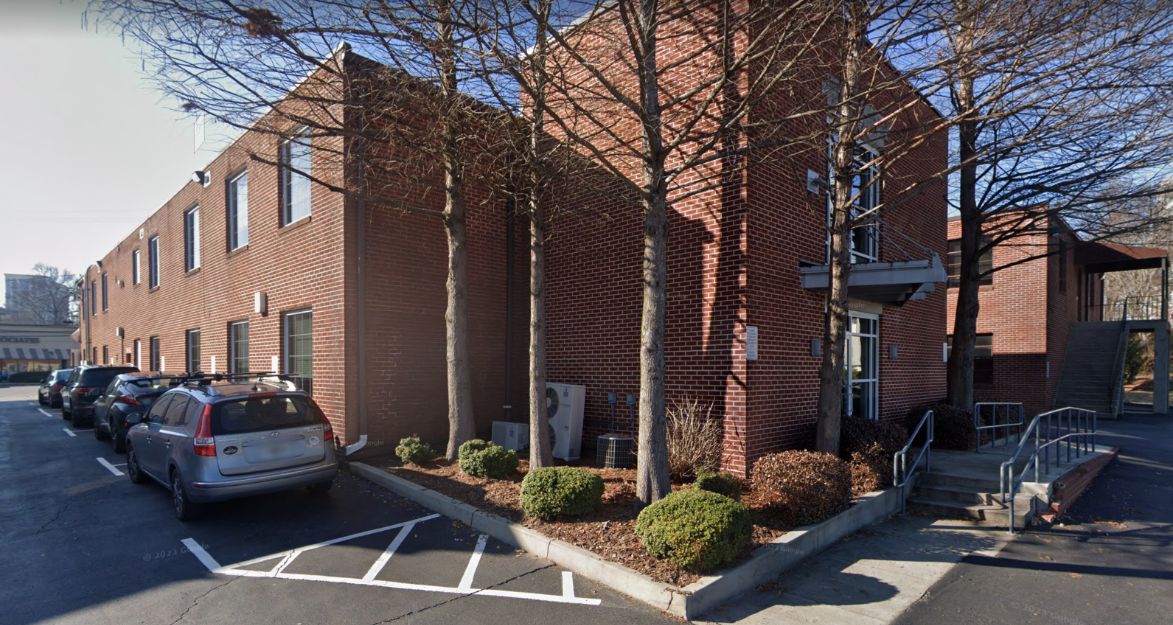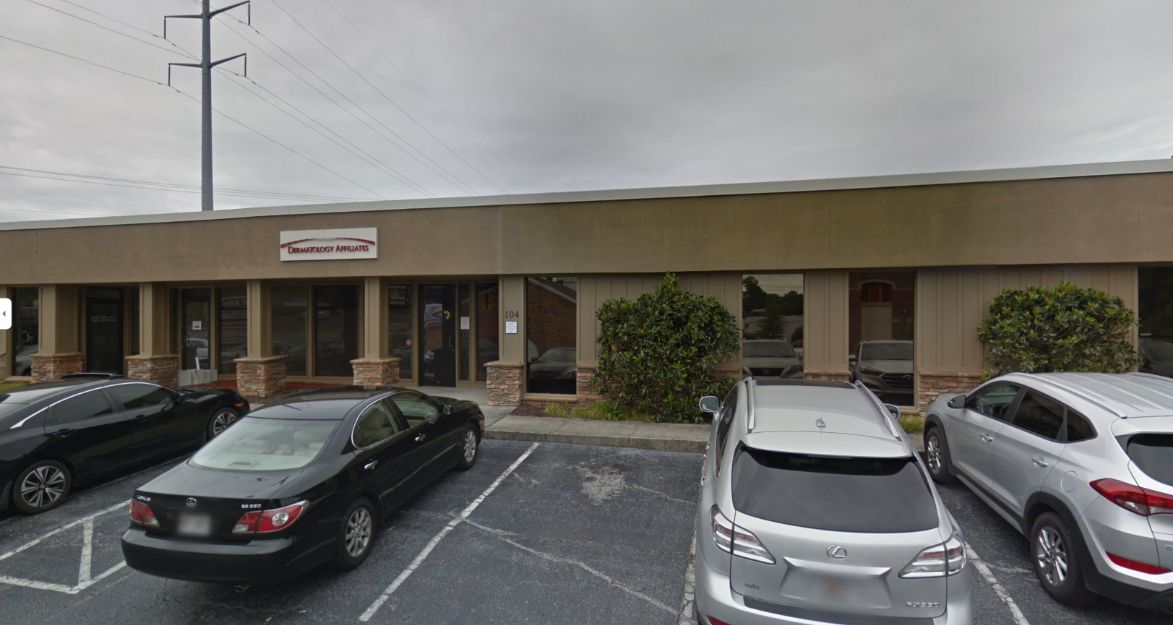Shingles Treatment Options: What Works Best
 Are you experiencing a painful rash that's raising alarm bells? At Dermatology Affiliates, we understand how the nerve-wracking signs and symptoms of shingles can disrupt your life. This post delves into the causes of shingles and outlines effective therapy options, including antiviral medications and pain management strategies. We'll also discuss the role of home care and the preventive power of vaccination. By reading on, you'll discover how to address your shingles effectively, bringing relief and clarity to a condition that demands prompt attention.
Are you experiencing a painful rash that's raising alarm bells? At Dermatology Affiliates, we understand how the nerve-wracking signs and symptoms of shingles can disrupt your life. This post delves into the causes of shingles and outlines effective therapy options, including antiviral medications and pain management strategies. We'll also discuss the role of home care and the preventive power of vaccination. By reading on, you'll discover how to address your shingles effectively, bringing relief and clarity to a condition that demands prompt attention.
Examples of Shingles
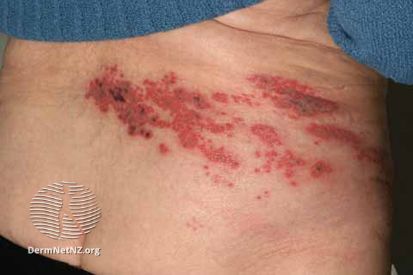
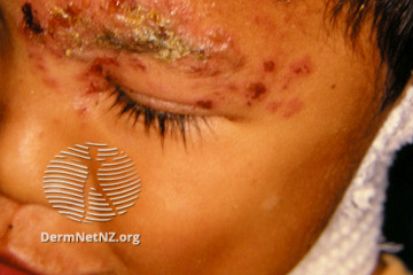
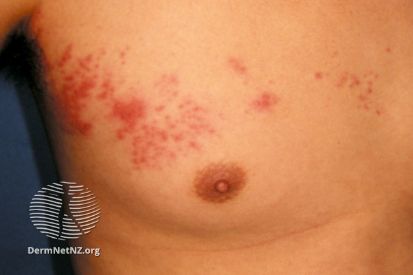
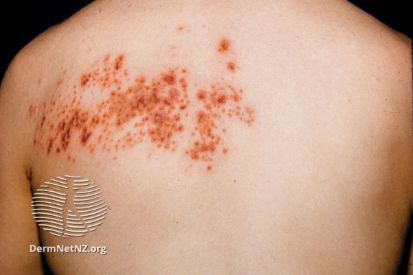
Key Takeaways
- Early treatment with antiviral medication can reduce shingles severity and prevent complications
- Recognizing early shingles symptoms is crucial for timely intervention and effective management
- Vaccination significantly decreases the risk of shingles and long-term pain from postherpetic neuralgia
- Stress management and a balanced diet are key to supporting the body's defense against shingles
- Shingles vaccines are safe and the benefits outweigh the rare risk of side effects
Understanding Shingles: Causes and Symptoms
As experts in skin health, we understand that shingles can be a painful condition marked by a blistering rash, often prompting a visit to a health professional. Triggered by the reactivation of the Varicella-Zoster Virus—the same virus that causes chickenpox—shingles primarily affects adults, especially when the immune system is compromised. Recognizing early signs is crucial, as is understanding common risk factors and the potential for serious complications if left untreated. In the following sections, we'll delve into what prompts shingles in adults, how to spot the early symptoms, and why timely treatment is essential for managing this condition. If you are experiencing any symptoms, please schedule an appointment with us.
What Triggers Shingles in Adults
In my professional experience, I've observed that shingles in adults can be triggered by a weakened immune system, often due to stress, aging, or conditions like immunodeficiency. The dormant Varicella-Zoster Virus, which remains in the body after a chickenpox infection, can reactivate and lead to shingles. It's not uncommon for adults over the age of 50 or those with weakened immune systems to seek treatment for this painful condition.
Preventative measures, such as the shingles vaccine, have proven effective in reducing the risk of developing shingles and its associated complication, postherpetic neuralgia. When the condition does manifest, early intervention with antiviral medication can help shorten the infection's duration and alleviate symptoms. As a dermatologist, I emphasize the importance of recognizing the early signs of shingles to my patients, as timely treatment is key to managing the outbreak and minimizing discomfort.
Recognizing the Early Signs of Shingles
Identifying the initial signs of shingles can be pivotal for prompt and effective treatment. Patients often report a tingling sensation or localized pain in a specific area, which may be followed by the appearance of a red rash and fluid-filled blisters. These symptoms typically arise in a single stripe on one side of the body or face, indicative of the herpes zoster virus's pathway along nerve fibers. As a dermatologist, I advise individuals to seek medical attention at the first sign of these symptoms, as early use of an antiviral drug can significantly improve outcomes.
Another early indicator of shingles is skin sensitivity or pain that precedes the rash by several days, often mistaken for other conditions like a muscle ache or kidney infection. It's essential to recognize that these sensations are the varicella zoster virus reactivating within the body's nervous system. To illustrate the progression of shingles, consider the following table, which outlines the typical stages of symptom development:
Stage | Symptom | Timeframe |
1 | Localized pain, tingling, or itching | 1-3 days before rash |
2 | Red rash and blisters | Several days after pain |
3 | Blisters crust over | 7-10 days after rash |
Understanding these early signs is crucial, as they provide a window of opportunity for intervention with antiviral medications and possibly the zoster vaccine, which can prevent the condition in those at high risk. My role is to guide patients through these early stages, ensuring they receive the care needed to manage symptoms and prevent complications.
How the Varicella-Zoster Virus Reactivates
In my practice, I've seen the Varicella-Zoster Virus, which lies dormant in nerve tissue after an initial chickenpox infection, reactivate due to weakened immune defenses. This reactivation can lead to shingles, characterized by fluid-filled blisters on the skin and the potential for postherpetic neuralgia, a chronic pain condition. Stress, aging, or health conditions that compromise the immune system are common culprits that can trigger this reactivation.
It's important for patients to understand that the varicella vaccine can offer protection against shingles by boosting the body's defense against the Varicella-Zoster Virus. When I diagnose a patient with shingles, I emphasize the importance of early treatment to reduce the severity of symptoms and the risk of complications like postherpetic neuralgia. Timely antiviral therapy can help manage the outbreak, alleviate skin discomfort, and promote healing.
Common Risk Factors for Developing Shingles
In my practice, I've identified several risk factors that increase the likelihood of developing shingles. Age is a significant factor; the risk escalates as one grows older, particularly for individuals over 50. Health conditions that compromise the immune system, such as HIV or cancer, also heighten the risk. Moreover, physical injury or emotional stress can weaken the body's defenses, potentially triggering the dormant Varicella-Zoster Virus to reactivate and cause shingles, leading to severe itch and discomfort.
Research, including studies referenced on PubMed, supports the observation that certain medications, like immunosuppressive drugs, can elevate the risk of shingles. As a dermatologist, I've seen patients who have undergone organ transplants or are on long-term steroids experience a higher incidence of this condition. It's crucial for individuals with these risk factors to be vigilant about their skin health and seek prompt medical advice if they suspect the onset of shingles symptoms.
Potential Complications Without Treatment
Without appropriate treatment, shingles can lead to persistent complications such as paresthesia, where individuals experience ongoing numbness or tingling in the affected areas. In my dermatology practice, I've seen patients who, due to delayed treatment, suffer from prolonged discomfort, which significantly impacts their quality of life. Particularly concerning is the risk of shingles during pregnancy, which can pose additional health concerns for both the mother and the unborn child.
Moreover, untreated shingles can escalate to severe neurological complications like encephalitis, a condition that inflames the brain and can manifest as a severe headache or even more dire symptoms. The importance of early intervention cannot be overstated: it's not just about rash resolution but preventing these long-term effects. Here's a brief overview of the potential complications that underscore the urgency of seeking treatment:
- Paresthesia leading to chronic sensory disturbances.
- Risks associated with shingles during pregnancy, affecting maternal and fetal health.
- Encephalitis, which can cause severe headaches and neurological damage.
The Importance of Timely Shingles Treatment
Addressing shingles promptly is paramount in mitigating the intensity of its symptoms and averting chronic nerve pain. As a dermatologist, I've seen the benefits of early medical intervention, which can significantly reduce the severity of the herpes zoster virus's impact. Timely treatment not only bolsters immunity but also helps prevent secondary infections that can complicate the condition. In the upcoming sections, we'll explore the efficacy of antiviral medications, the role of analgesics in managing discomfort, and strategies to maintain a robust immune system, particularly for those with cancer or fever as underlying conditions.
Benefits of Early Medical Intervention
In my practice, initiating shingles treatment at the earliest sign of the virus's reactivation can prevent the escalation of symptoms and complications, such as severe eye inflammation or scarring. For instance, early use of antiviral medications like aciclovir can significantly reduce the duration and severity of the outbreak, helping to preserve vision if the shingles rash is near the eye and prevent permanent skin damage.
Moreover, addressing shingles promptly can inhibit the virus from causing widespread inflammation and nerve damage. I've seen patients experience less postherpetic neuralgia, a debilitating condition, when they receive early treatment. This proactive approach not only alleviates immediate discomfort but also contributes to a more favorable long-term prognosis, reducing the risk of chronic pain and complications.
Reducing the Severity of Shingles Symptoms
In my practice, I've found that early administration of antiviral medications like valaciclovir can be instrumental in reducing the severity of shingles symptoms. This approach is particularly beneficial for patients with underlying conditions such as HIV or those undergoing corticosteroid therapy, as their immune systems may be more vulnerable to the aggressive nature of the virus. By acting swiftly, we can mitigate the intense pain and rapid spread of the rash, offering patients a smoother path to recovery.
Stress is another factor that can exacerbate shingles symptoms, leading to more severe outbreaks. I advise my patients to adopt stress-reduction techniques alongside their prescribed treatment to enhance their body's ability to combat the virus. By managing stress effectively, patients can not only alleviate the physical symptoms of shingles but also support their overall well-being, which is crucial in the healing process.
Preventing Long-Term Nerve Pain
In my practice, I've seen the critical role that timely shingles treatment plays in preventing long-term nerve pain, a condition known as postherpetic neuralgia. By following the guidelines set forth by the Advisory Committee on Immunization Practices, I recommend early intervention with antiviral medicine to patients experiencing immunosuppression, which can significantly reduce the risk of persistent pain following a shingles outbreak. This approach is a cornerstone of effective pain management for shingles sufferers, aiming to protect nerve fibers from the prolonged effects of the virus.
Moreover, I've observed that when patients with shingles receive prompt medical attention, the likelihood of experiencing chronic pain that can impact brain function and quality of life decreases. In my advisory capacity, I stress the importance of early diagnosis and the use of targeted antiviral treatments, which, in conjunction with pain management strategies, can prevent the transition from acute viral infection to a chronic pain state. This proactive treatment is essential in safeguarding patients' long-term neurological health and well-being.
Avoiding Secondary Infections
In my practice, I've seen how crucial it is to treat shingles promptly to prevent secondary infections, which can complicate the condition and prolong recovery. For example, untreated blisters can become infected with bacteria, leading to conditions like cellulitis or, less commonly, impetigo. This is why I stress the importance of a proper dose of antiviral medication and maintaining clean, dry skin around the affected area to my patients, as these steps are vital in reducing the risk of additional skin infections such as dermatitis.
Moreover, I advise patients to be vigilant for signs of infection near sensitive areas, such as the ear, which could indicate Ramsay Hunt syndrome if accompanied by facial paralysis. While less common, I've treated cases where a shingles outbreak near the ear required immediate attention to prevent long-term complications. It's also worth noting that while opioids may be prescribed for severe pain management, I prioritize non-opioid options when possible to avoid the risks associated with opioid use. Keeping the affected area clean and monitored helps prevent the transformation of a shingles rash into a more problematic cold sore-like infection.
Antiviral Medications and Their Role
In my dermatology practice, I've seen firsthand how antiviral medications play a pivotal role in combating shingles. These drugs, targeting the herpesviridae family, are essential for patients experiencing an outbreak along a dermatome. Commonly prescribed antivirals work by inhibiting the virus's replication within the dorsal root ganglion, offering relief and promoting healing. It's critical to administer these medications within an optimal timeframe to maximize their effectiveness. In the following sections, I'll discuss the importance of early intervention, managing potential side effects, and the role of antivirals in shingles treatment, without resorting to misleading advertising claims.
How Antivirals Combat Shingles
In my practice, I've seen how antiviral medications target the Varicella-Zoster Virus within the nervous system, effectively halting its replication. These drugs are particularly adept at penetrating the central nervous system, where the virus resides, thereby reducing the viral load and alleviating the acute symptoms of shingles. By understanding the biology of the virus and its lifecycle, I can prescribe antivirals that offer my patients relief from the painful rash and blisters associated with shingles.
For those with compromised immune systems, perhaps due to malignancy or other conditions, antivirals are a cornerstone of shingles management. These medications not only soothe the immediate discomfort but also help prevent the long-term complications that can arise from the virus's impact on the body's nervous system. In conjunction with soothing lotions to care for the skin, antiviral therapy is a critical component of a comprehensive treatment plan:
- Initiate antiviral therapy to reduce the severity and duration of the rash.
- Apply prescribed lotions to alleviate skin irritation and prevent secondary infections.
- Monitor the nervous system for signs of complications, adjusting treatment as necessary.
Common Antiviral Drugs Prescribed
In my dermatology practice, I frequently prescribe antiviral medications such as famciclovir to patients grappling with shingles. Famciclovir is effective in curtailing the replication of the Varicella-Zoster Virus, thereby reducing the duration and intensity of the outbreak. Patients often report a significant decrease in the discomfort associated with lesions when this medication is taken early in the course of the disease.
Another common treatment I recommend is the application of calamine lotion to soothe the skin and provide relief from itching and irritation around the lesions. While there is no absolute cure for shingles, these antiviral treatments, combined with supportive care, can greatly enhance a patient's comfort and accelerate healing. It's important for patients to inform me of any allergies to ensure that the prescribed medication is both safe and effective for their specific needs:
| Medication | Purpose | Consideration |
| Famciclovir | Reduces viral replication | Early intervention |
| Calamine Lotion | Soothes skin irritation | Allergy considerations |
Optimal Timing for Medication Effectiveness
In my dermatological practice, I've observed that the effectiveness of antiviral medications in treating shingles is highly dependent on the timing of administration. To prevent the progression to severe complications such as meningitis, pneumonia, or syndromes affecting the spinal cord, it's imperative to begin antiviral treatment within the first 72 hours after the onset of the rash. This window of opportunity is critical to halt the virus's replication and reduce the intensity of symptoms, including chills and fever.
Patients who adhere to this optimal timing often experience a more favorable outcome, with a reduced risk of enduring the long-term effects of postherpetic neuralgia. As a dermatologist, I guide my patients through the treatment process, ensuring they understand the urgency of early intervention:
- Recognize early symptoms such as pain or tingling.
- Seek immediate medical consultation upon noticing a rash.
- Commence antiviral therapy within the recommended timeframe.
Managing Possible Side Effects
In my practice, I've seen that while antiviral medications are pivotal in managing shingles, they can come with side effects that need careful management. For instance, patients with herpes zoster ophthalmicus, a severe complication affecting the eye, may experience heightened sensitivity to these drugs. It's my responsibility to monitor for adverse reactions, such as gastrointestinal discomfort or headaches, and adjust treatment plans accordingly, ensuring patient safety and comfort while navigating the complexities of neurology and skin health.
Furthermore, I stay informed about the latest findings from the National Institute of Neurological Disorders and Stroke to provide my patients with the most current treatment options. For those who may not tolerate antivirals well, alternatives like capsaicin cream offer relief from postherpetic neuralgia, a common risk factor for chronic pain in shingles patients. My goal is to balance effective virus suppression with the management of potential side effects, offering a comprehensive approach to shingles care that prioritizes patient well-being.
Effective Pain Management Techniques
In my practice, I've found that managing the pain associated with shingles is a multifaceted approach. Over-the-counter pain relief options like paracetamol can address mild discomfort, while prescription medications are reserved for more severe pain. Topical creams and patches, along with alternative therapies, can further reduce pain symptoms. Additionally, lifestyle adjustments may ease discomfort and prevent complications. Together, these strategies form a comprehensive pain management plan, tailored to each patient's needs and monitored by their physician to avoid adverse effects such as hair loss or increased stroke risk.
Over-the-Counter Pain Relief Options
In my dermatology practice, I often recommend over-the-counter pain relievers to patients suffering from shingles, particularly when the pain is moderate and localized. These medications can provide temporary relief from the acute discomfort caused by the virus's effect on the cranial nerves, including the trigeminal nerve, which is frequently involved in facial shingles. It's important to note that while these options can be effective, they do not address the underlying virus latency or halt the progression of the condition.
For those experiencing more intense pain, I suggest a combination of over-the-counter analgesics and topical creams that can be applied directly to the affected ganglion area. This approach can help soothe the nerve pain and reduce inflammation. Additionally, I inform patients about the availability of polymerase chain reaction testing, a diagnostic tool that can confirm the presence of the Varicella-Zoster Virus, thereby guiding the selection of the most appropriate pain management strategy.
Prescription Medications for Severe Pain
In my practice, when shingles pain escalates beyond what over-the-counter options can manage, I often prescribe stronger medications. Ibuprofen, for instance, can be effective for reducing inflammation and alleviating severe discomfort. However, before prescribing any medication, I meticulously review a patient's medical history to ensure compatibility and prevent adverse reactions, particularly in tissues where the virus is active.
For patients presenting with intense pain that disrupts daily activities, I may recommend prescription-strength analgesics. These medications can provide significant relief, but it's essential to use them judiciously, considering the patient's overall health and any potential interactions with other treatments. Accurate diagnosis and careful monitoring are key to ensuring that these powerful pain relievers bring relief without compromising safety, especially when administered via the mouth or other sensitive areas.
Topical Creams and Patches
In my dermatology practice, I've found that topical creams and patches can be particularly effective for patients experiencing localized shingles pain. These treatments, which can be applied directly to the skin, deliver medication to the affected area, providing targeted relief. For individuals who have undergone organ transplantation or those with autoimmune conditions like psoriasis, where systemic weakness may be a concern, topical applications minimize systemic absorption and offer a safer alternative to oral medications.
Moreover, for patients with shingles-related complications such as keratitis, which affects the eye, or those with compromised skin barriers due to conditions like eczema, topical treatments can be a crucial part of the management strategy. By enhancing the skin's natural barrier function and delivering an antibody-rich formula, these creams and patches can help soothe the nerve pain and inflammation associated with shingles, without the risk of further irritating sensitive areas.
Alternative Therapies for Pain Reduction
In my practice, I've seen patients with shingles benefit from alternative therapies that complement traditional pain management techniques. For instance, acupuncture has shown promise in reducing the severity of nerve pain by stimulating specific points on the body, which can help modulate pain signals and promote relaxation. This approach, when combined with conventional treatments, can offer a holistic path to pain reduction, addressing both the physical and emotional aspects of shingles recovery.
Another effective alternative therapy I recommend is guided imagery, which can be accessed through various apps. This technique involves visualizing calming images and scenarios, which has been shown to lower stress levels and reduce pain perception. By directing patients to reputable sources, such as national health websites that offer https-secured guidance, they can safely explore these options from their cell phones or other devices, adding a layer of convenience to their pain management regimen:
| Therapy | Benefit | Mode of Access |
| Acupuncture | Modulates pain signals | In-person sessions |
| Guided Imagery | Reduces stress and pain perception | Apps, Online Platforms |
Lifestyle Adjustments to Ease Discomfort
In my practice, I advise patients undergoing shingles treatment to make lifestyle adjustments that can significantly ease discomfort. For those receiving chemotherapy, managing stress is vital as it can impact blood pressure and overall health, potentially exacerbating shingles symptoms. Simple changes like ensuring adequate rest, maintaining a balanced diet to support stomach health, and engaging in gentle exercise can improve blood flow and enhance the body's healing response.
Furthermore, I provide my patients with information from the National Institutes of Health that highlights the importance of avoiding irritants that can aggravate shingles lesions. Wearing loose-fitting clothing and using cool compresses can offer immediate relief from skin irritation. These practical steps, when incorporated into daily routines, can help manage the discomfort associated with shingles and support a more comfortable recovery process:
| Lifestyle Adjustment | Benefit | Details |
| Stress Management | Reduces symptom exacerbation | Important for patients with compromised immune systems, such as those undergoing chemotherapy |
| Nutrition and Exercise | Improves blood flow and healing | Supports stomach health and overall well-being |
| Avoiding Irritants | Minimizes skin irritation | Information on suitable clothing and compresses can be found through National Institutes of Health resources |
Home Care Strategies During Shingles
In my dermatology practice, I guide patients through effective home care strategies for managing shingles, complementing medical treatments. Proper care for shingles rashes is essential to prevent complications like molluscum contagiosum or paralysis. Comfort measures and nutritional support bolster immune health, while stress reduction methods can alleviate the burden on your system. It's also vital to know when to return to primary care or seek further medical advice, especially if symptoms persist or worsen despite using over-the-counter drugs or prescribed antibiotics. These strategies are not just about symptom management; they're about fostering an environment conducive to healing.
Proper Care for Shingles Rashes
In my practice, I emphasize the importance of gentle care for shingles rashes to mitigate discomfort and prevent further skin complications. Patients experiencing fatigue and muscle weakness as a result of shingles benefit from rest and minimal stress on the affected areas. Applying topical treatments like lidocaine can provide temporary relief from the acute pain, while ensuring the rash is kept clean and dry helps prevent the development of ulcers and secondary bacterial infections.
For those under my care, I recommend a structured approach to managing their shingles at home:
- Use lidocaine patches or creams to numb the pain, being careful to follow the prescribed dosage.
- Maintain the health of the affected skin by gently cleansing with soap and water, avoiding harsh scrubbing.
- Apply cool compresses to soothe inflammation and reduce the risk of ulceration.
These strategies, when implemented correctly, can significantly ease the symptoms of shingles, allowing patients to focus on their overall health care and recovery. It's crucial to balance activity with rest, as overexertion can exacerbate fatigue and slow down the healing process. By following these home care tips, patients can better manage their symptoms and contribute to their skin's healing, complementing the medical treatments they receive.
Comfort Measures to Promote Healing
In my dermatology practice, I advise patients that comfort is a key component in the healing process of shingles. Simple measures, such as ensuring a restful environment and applying cool compresses to the affected areas, can significantly reduce the discomfort associated with the rash. This approach aligns with the recommendations in the Morbidity and Mortality Weekly Report, which emphasizes the importance of symptom management in reducing the overall impact of the condition on patients' lives.
Additionally, I encourage patients to wear soft, breathable clothing to avoid irritation of the rash, which can be as distressing as the symptoms of genital herpes. In my collaboration with colleagues in ophthalmology and internal medicine, we've found that protecting the skin from additional stress can prevent complications and promote faster healing. Here's a table that outlines key comfort measures and their benefits:
| Comfort Measure | Benefit |
| Restful Environment | Reduces stress, promoting immune function |
| Cool Compresses | Alleviates rash discomfort, decreases inflammation |
| Soft Clothing | Minimizes skin irritation, prevents rash aggravation |
Nutritional Support for Immune Health
In my practice, I've observed that a well-balanced diet plays a pivotal role in bolstering the immune system, which is essential for patients battling shingles. Incorporating foods rich in vitamins and antioxidants can aid in the body's defense against the Varicella-Zoster Virus, especially for those with autoimmune conditions like lupus or skin sensitivities such as contact dermatitis. I advise patients to focus on nutrient-dense foods that support immune health, which can be particularly beneficial for those experiencing shingles in the neck area, where discomfort can be pronounced.
Moreover, I recommend that patients with shingles increase their intake of foods high in lysine, an amino acid that has been shown to help manage viral conditions. This is especially important for individuals with immune-compromising conditions like uveitis or a history of measles, as their systems may require additional support to combat the shingles virus effectively. By ensuring a diet that supports immune function, patients can create a stronger foundation for their overall shingles treatment plan, potentially reducing the severity and duration of their symptoms.
Stress Reduction Methods
In my dermatology practice, I've found that managing stress is a critical component of home care for shingles, as stress can exacerbate symptoms like muscle weakness and increase the risk of complications. For patients who have shingles on sensitive areas such as the eyelid, which can be as uncomfortable as poison ivy, I recommend relaxation techniques that have been endorsed by reputable sources like the Mayo Clinic. These include deep breathing exercises and mindfulness meditation, which can help reduce the body's stress response and promote healing.
Additionally, I advise my patients that stress management is not only beneficial for their current condition but also for their overall health, potentially reducing the risk of issues like preterm birth in pregnant women. By incorporating stress reduction methods into their daily routine, patients can alleviate some of the discomfort associated with shingles and support their body's natural recovery process. Simple activities such as listening to calming music or engaging in gentle yoga can make a significant difference in their well-being during this challenging time.
When to Seek Further Medical Advice
In my practice, I advise patients to seek further medical advice if they experience symptoms indicative of complications, such as those affecting the ophthalmic nerve. This is particularly important if there is a sudden change in vision or if the pain around the eye intensifies, as these could signal the need for an injection or other targeted treatments. Such symptoms require immediate attention to prevent long-term damage and to manage the incidence of severe complications effectively.
Additionally, I urge patients to consult a healthcare professional if signs of bacterial infection appear, such as increased redness, pus, or swelling at the rash site. This is crucial for individuals with compromised immune systems or pregnant women who are at risk for complications like low birth weight in newborns. Prompt medical intervention can prevent the spread of bacteria and ensure the health and safety of both the mother and the baby.
In my dermatology practice, I emphasize the critical role of vaccination in shingles prevention. We'll explore the available vaccines, assess eligibility criteria, and discuss the effectiveness of immunization. Addressing common concerns, including those related to photophobia, breastfeeding, and conditions like lymphoma and impetigo, is paramount. We'll also consider the long-term benefits of vaccination, providing patients with the knowledge to make informed decisions about their health.
Overview of Available Vaccines
In my dermatology practice, I often discuss the importance of shingles vaccination as a preventive measure. Currently, there are vaccines available that have been shown to reduce the risk of developing shingles and its complications. These vaccines work by stimulating the body's immune response to the Varicella-Zoster Virus, which lies dormant in the spinal nerve tissues after an initial chickenpox infection. Patients who have undergone a thorough exam and are eligible, particularly those over the age of 50 or with weakened immune systems, may receive a recommendation for vaccination to help prevent the reactivation of the virus.
From my experience, I've seen how vaccination can significantly decrease the incidence of postherpetic neuralgia, a painful condition that can occur after shingles. This is particularly relevant for patients who may be at risk of nerve damage and complications like necrosis of the pulp tissue. While no vaccine can guarantee complete immunity, the available shingles vaccines can be an effective part of a comprehensive shingles prevention strategy, which may also include anticonvulsant medications for those with a history of neuralgia. It's a proactive step that can spare patients from the acute and long-term discomfort associated with shingles.
Determining Eligibility for Vaccination
In my practice, I advise patients that determining eligibility for shingles vaccination is a critical step in preventing the condition. When a patient comes to me with concerns about shingles, especially if they've experienced pain in the abdomen or elsewhere, I assess their overall health, including any potential risks to a fetus in pregnant women, and consult with their health care provider to ensure the vaccine is suitable for them. This evaluation is essential, as it helps prevent complications such as myelitis, which can be associated with shingles.
Moreover, I consider the patient's age and immune status, as these are key factors in vaccine eligibility. For instance, individuals with a compromised immune system may require a tailored approach to vaccination. I also discuss lifestyle adjustments that can support the vaccine's effectiveness, such as incorporating oatmeal baths for skin health, which can be particularly soothing for shingles rashes. It's my goal to provide a comprehensive health strategy that not only includes vaccination but also enhances overall well-being.
Understanding Vaccine Effectiveness
In my dermatology practice, I've observed that understanding the effectiveness of shingles vaccines is paramount for patients seeking prevention strategies. These vaccines have been clinically shown to reduce the incidence of shingles and the severity of its complications, such as postherpetic neuralgia, which can affect the optic nerve and lead to chronic pain. For patients with skin conditions like rosacea or a history of keloid scarring, the vaccine's ability to prevent the blistering rash of shingles can also prevent potential exacerbation of these conditions.
Moreover, the shingles vaccine is particularly beneficial for pregnant women, as it can help maintain the health of the mother and safeguard the birth weight of the newborn by preventing the virus's reactivation. In my practice, I've seen patients with compromised immune systems, including those with oral manifestations like a swollen tongue, experience a significant reduction in shingles outbreaks following vaccination. The following table illustrates the vaccine's effectiveness in preventing shingles and its complications:
| Condition | Without Vaccine | With Vaccine |
| Shingles Outbreak | Higher Incidence | Reduced Incidence |
| Postherpetic Neuralgia | More Common | Less Common |
| Complications in Pregnancy | Potential Risk | Reduced Risk |
| Exacerbation of Skin Conditions | Possible | Less Likely |
Addressing Common Vaccine Concerns
In my practice, I often encounter patients with concerns about the shingles vaccine, particularly regarding its safety and potential side effects. Some worry about the risk of developing conditions like conjunctivitis or experiencing oral health issues such as stomatitis, inflamed gums, or toothache post-vaccination. I assure them that these side effects are rare and the benefits of vaccination, which include a reduced risk of shingles and its complications, far outweigh these concerns. It's my responsibility to provide clear, evidence-based information to help patients make informed decisions about their health.
Moreover, I understand that patients may be apprehensive about the vaccine's interaction with existing dental issues, fearing that it could exacerbate tooth pain or trigger stomatitis. Through careful review of their medical history and current oral health, I guide them on how the vaccine can be safely administered. By addressing these valid concerns with compassion and expertise, I help patients navigate their options for shingles prevention, ensuring they feel confident and informed about the path they choose for their well-being.
Long-Term Benefits of Immunization
In my practice, I've witnessed the long-term benefits of immunization against shingles, which extend beyond the immediate prevention of the rash. Patients who receive the vaccine are less likely to experience the chronic pain of postherpetic neuralgia, a condition that can be as debilitating as a persistent wart and often requires a differential diagnosis. This proactive step, supported by the National Center for Immunization and Respiratory Diseases, can significantly reduce the healthcare burden associated with long-term pain management and the potential need for medications like prednisone.
Moreover, the peace of mind that comes with vaccination cannot be overstated. Patients who are immunized gain a sense of security, knowing they have taken a significant step to protect their health. This is particularly valuable for those with a history of shingles or at high risk for the condition. Getty Images often depict the distressing effects of shingles, but through vaccination, my patients can look forward to a future with a reduced likelihood of experiencing such discomfort, reinforcing the importance of immunization in comprehensive shingles treatment strategies.
Frequently Asked Questions
Shingles, a painful rash, is triggered by the reactivation of the varicella-zoster virus, often due to weakened immunity in older adults or stress.
Prompt treatment for shingles is vital to reduce the risk of complications, such as postherpetic neuralgia, and to alleviate severe pain and rash progression.
Antiviral medications for shingles reduce the virus's replication, hasten healing, and mitigate the severity of symptoms.
Managing shingles pain effectively often involves antiviral medications, pain relievers, and cool compresses to alleviate discomfort and prevent complications.
Yes, the shingles vaccine is highly effective in preventing shingles and its complications, particularly in older adults.
Conclusion
In managing shingles, early intervention with antiviral medications is paramount, significantly reducing symptom severity and preventing long-term complications like postherpetic neuralgia. Topical treatments and pain management strategies, including over-the-counter options and prescription medications, are essential for immediate relief and improved quality of life. Vaccination emerges as a key preventive measure, effectively lowering the risk of shingles outbreaks and their associated pain. Ultimately, a comprehensive approach to treatment, combining medical intervention, lifestyle adjustments, and immunization, offers patients the best chance for a swift recovery and long-term health protection.
Featured Products
Check your local office for current stock!
Check your local office for current stock!


